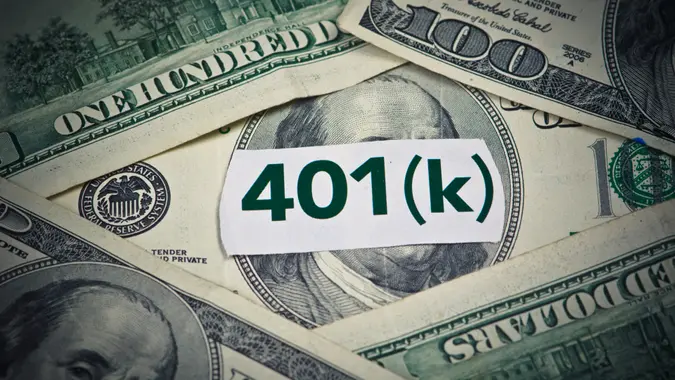How Much More You Can Save If You Take Advantage of ‘Super Funding’ Your 401(k) in 2025

Commitment to Our Readers
GOBankingRates' editorial team is committed to bringing you unbiased reviews and information. We use data-driven methodologies to evaluate financial products and services - our reviews and ratings are not influenced by advertisers. You can read more about our editorial guidelines and our products and services review methodology.

20 Years
Helping You Live Richer

Reviewed
by Experts

Trusted by
Millions of Readers
Older workers saving for retirement can boost their 401(k) contributions in 2025 thanks to a new “super funding” option. Under a change made in the Secure 2.0 Act, employees who are 60- to 63-years-old can make a “catch-up” contribution of $11,250 this year, according to the IRS. That’s above the $7,500 catch-up contribution available to employees 50 and older.
Catch-up contributions are designed to help older employees accelerate their retirement savings in 401(k), 403(b) and governmental 457 plans as well as the federal government’s Thrift Savings Plan. As the IRS noted, employees younger than 50 have an annual contribution limit of $23,500 in 2025, up from $23,000 last year. With the super funding option, employees 60-63 can now contribute up to $34,750 a year.
If you’re behind on your retirement savings, now is a good time to take advantage of the higher contribution limits. It typically takes a couple of pay periods for 401(k) contribution changes to go into effect, CNBC reported. Boosting your contributions in January can help ensure that you max out your contributions for the full year.
Maxing out your retirement contributions is an excellent way to grow your nest egg — especially if your employer offers matching contributions.
The typical 401(k) portfolio generates an average annual return of 5% to 8%, according to a survey of retirement planners from SmartAsset. If you qualify for the new yearly 401(k) limit of $34,750, that means a potential return of $2,780 a year just on your contributions alone. If you work another five years, the return on those contributions would approach $14,000. The total will be even higher with contributions from your employer.
Moreover, thanks to the power of compound interest, your money “can potentially double every 10 years with a 7% return,” Jared Weitz, CEO and founder of United Capital Source Inc. in Garden City, New York, told US News.
More From GOBankingRates
- Nearly 1 in 3 Americans Hit by a Costly Holiday Scam, Norton Survey Shows -- How To Avoid This
- Here's What the Average Social Security Payment Will Be in Winter 2025
- How Middle-Class Earners Are Quietly Becoming Millionaires -- and How You Can, Too
- The Easiest Way to Score $250 for Things You Already Do
 Written by
Written by  Edited by
Edited by 

























